Clones – Review
by Adam
|
Among the very first games I ever played was DMA Design’s Lemmings. It’s a far cry from what the studio is now most famous for, but it’s still a name you can fondly bounce off another gamer, eliciting high pitched cries of “OH NO!” followed by a chuckle and proclamations of how awesome it was. I remember it, you remember it and Tomkorp Computer Solutions remembers it, resurrecting the puzzling strategy for a modern day hurrah in the form of Clones for the PC.
It’s an odd phenomenon of games gone by that no matter how much we may love them, they rarely survive the tests of time. Playing Pac-Man, for example, is nowhere near as cool or fun as it was back then, but with a little tinkering, you get the joys of Pac-Man CE: DX, updating everything you loved about the game and making it work for our modern day demands. Clones is to Lemmings what Pac-Man CE: DX is to Pac-Man. Taking the stage under a different name with blobs of googly eyed goo in place of the green haired, blue dress wearing, supposedly suicidal Lemmings, just how does the formula of herding minions from ‘A’ to ‘Exit’ hold up, and have Tomkorp provided enough distinction to warrant you parting with your cash?
To alleviate any immediate concerns, Clones is not at all setting out its stall to be something new, different or unique by ignoring the heritage it now shares. With Clones, Tomkorp are paying an excellent homage to DMA’s major break into the industry, never shying away from the subject or attempting to gloss it over with some crazy marketing guff. Clones is simply the natural evolution of the Lemmings genre, bringing a vast array of meticulously designed levels, a detailed level design tool and online community features which happily rival Media Molecule’s Little Big Planet. Consider that the team behind this have also invested a great amount of creativity in the construction of entirely new game modes that you never thought could work in a game cut from the Lemmings cloth, and you’d be wise not to underestimate it.
For anyone that spent 1991 pretending to be all sad about the world and stuff, smelling like teen spirit, Lemmings saw you instruct a crowd of bipedal Lemmings over, under and through a two dimensional plane of terrain to a magical exit, possibly containing cake. The creatures were mostly autonomous, constantly walking until an obstacle forced them to turn around or until the laws of gravity were asked to give a demonstration of their most basic principles, further supporting the urban myth of what it is Lemmings like to do near cliffs. The player’s role in all of this was to assign a temporary skill set to an individual Lemming, instructing them to dig, build bridges, climb, deploy umbrellas to ensure a safe landing or, occasionally, to reveal themselves as the founding members of Al Qaeda. Making the best use of these numerically restricted tools resulted in the safe guidance of the Lemmings to the Promised Land and Clones begins in much the same way.
In fact, the very first level you’ll play is ‘Just Drill it!’, a tongue in cheek reference to the very first level in Lemmings, ‘Just Dig!’. But here’s where I’m going to stop talking about Lemmings as this is where the two shake hands, wish each other well and go their separate ways, promising to write at Christmas and to send each other pictures of funny animals wearing hats that they find on their travels. You see, there’s not quite as much challenge in simply guiding the bipedal blobs from their creation to the exit point that can hope to engage the modern gamer; there needs to be something more.
 Love them or hate them, collectibles are one of the first introduced, additional challenges to the formula, asking the player to carefully consider how best to proceed in the level that will allow them to gain the ten-twenty or so Qdots, scattered throughout the terrain. Collection is not essential nor is it encouraged, with progression in Clones tied purely to puzzle completion, and collection of the Qdots tied to the unlocking of extra materials for use in the level editor, Stamps for decorating the level with as you play and Decorations to dress up the Clones.
Love them or hate them, collectibles are one of the first introduced, additional challenges to the formula, asking the player to carefully consider how best to proceed in the level that will allow them to gain the ten-twenty or so Qdots, scattered throughout the terrain. Collection is not essential nor is it encouraged, with progression in Clones tied purely to puzzle completion, and collection of the Qdots tied to the unlocking of extra materials for use in the level editor, Stamps for decorating the level with as you play and Decorations to dress up the Clones.
Upon completion of your very first puzzle, you’ll discover the extra layers of challenge that Tomkorp have engineered into the genre. Having installed the game and launched it for the first time, Clones will ask you to register your CD key to an account created on the game’s website. This one time only requirement then grants players still connected to the internet synchronous access to the global scoreboards, ending each level by comparing your efforts with that of the thousands of other players around the world and assigning your scores to a position on the leaderboards. Players are judged on the number of Qdots collected, the number of Clones who survived compared to the number lost, the amount of morphs used to solve the puzzle and the total time required to incur victory. As it stands, I’m the eighth greatest Clones player on the stage ‘A Bit of Mold’ and I’d thank you if you could avoid besting that.
It’s again, not a required element of the gameplay that you’re going to have to sink some time into in order to progress. Having presumably taken some inspiration from Nadeo’s brilliant and mind-bendingly fun TrackMania series, these scores are ultimately arbitrary and only for those who have that screw loose in the back of their head which forces them to do better until they accept that 8th is as good as it gets and who take to politely threatening other people on the internet to leave their high scores alone. Stats are tracked in-game and on the community website, though sadly it’s not a perfect union. Clones is only able to track personal statistics in-game is unable to present the world rankings from inside that environment, instead automatically alt-tabbing you to an internet browser, which at least tabs back without any hiccups when you’re done plotting someone’s demise.
Unlike TrackMania, replays of those better than you are unavailable, meaning that if you want to know how to beat them, you’d have to resort to the hiring of an iPrivate Eye to e-stalk the culprit who will ultimately (and hopefully) beat the solution out of them (watch your back ‘SnakesEleven’). For anyone completely befuddled by a stage and simply in need of a more general solution to any of the puzzles, each level is pre-loaded with a Replay Guide, accessible at no penalty to the player, save for the moral quandary of knowing that you weren’t able to figure it out yourself. It’s definitely a handy addition to the game, meaning that fifteen minute sessions on a 120 second puzzle are at least salvageable for your sanity at a moment’s left-click. That said, just because you’ve seen the puzzle completed, paused it, re-wound it and watched it at half speed doesn’t mean you’ll have an equal amount of luck in completing it. Skill is certainly as big a requirement as logic and patience are with this one.
Each puzzle is a unique challenge, sometimes affording you a gracious amount of ‘Morphs’ (the tools available to you ) and often limiting you to only a select few morph abilities. As you would expect, each particular morph is introduced to you, demonstrated, trialled and then tested. The first level provides you only with the ability to dig vertically down, transforming the lower section of a blob into a mining drill and stopping once it has either cleared the obstacle or hit the indestructible material, Clonium. In the event you end up trapping a poor Clone, while his brethren march on to the end of the level, you can of course detonate any remaining Clones in a shower of particles that makes you feel both bad and oh so good at the same time. As you advance, the remaining eleven abilities are granted to you, with each given a stage or two to ease you into its function and practicality before throwing you into the deep end and shouting at you to stop drowning. Rarely does the game grant you full access to all eleven abilities simultaneously and whenever it does, they’re often limited in number, requiring you to think carefully before deployment. For the most part though, the number of morphs available is often more than adequate and it’s only in the later levels that this generosity is taken from you, asking only the most dedicated of whoreboard chasers to think twice about how many they need to use to end the level.
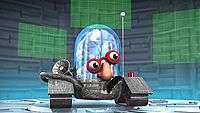 |
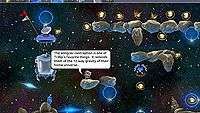 |
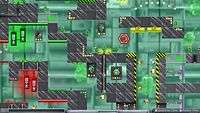 |
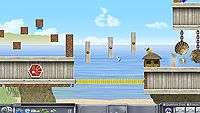 |
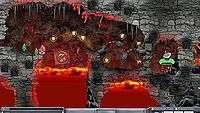 |
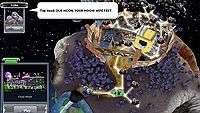 |
Borrowing a little from Popcap’s Peggle, the Clones Single Player ‘Pilgrimage’ requires you to learn from the ten Elder CloneMasters, each operating from their own region of the Clones Planet. Each CloneMaster has a particular leaning towards one skill or element of level design which sees you submit yourself to 14-19 stages of topographic puzzles. Your first stop is the Caves with the CloneMaster DrillDude, followed by RoboBrain in the industrial Cloneoppolis, all the way to a final showdown with the ultimate Elder, Wattson R. Ice on the Astral Planes. There’s no plot to glean and little interaction with anything other than the blobs, although each region is prefaced and concluded with a short and charming clip of the CloneMaster, designed to ease you in and reward you for your efforts. The characters never talk, save for a short briefing for each level in which they’ll taunt you in text to goad you into seeing the next one through. When you find yourself on a good solving streak, it’s too easy to ignore these and almost criminal to do so, given that the taunts are often funny and help to distract you from the frustration of failure.
After meeting incremental targets, more CloneMasters are made available to you and you’re mostly allowed to switch freely between the regions, although should you attempt to leap from region to region without seeing one through to the final confrontation, you’ll find progression restricted beyond where the developers have designed for you to have been sufficiently educated. With over 150 levels to challenge the player, Clones can’t simply rely on hoping that they’ll enjoy the standard game mode of ‘Corral the Clone’ and, in order to keep you interested, they’ve invested a creative amount of time in refreshing the experience for those easily bored and have come up with some brilliant twists in the process.
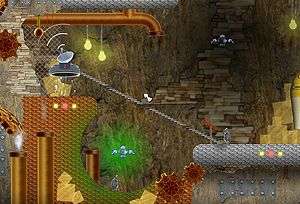 Never believing that any other type of gameplay could work for the genre, Clones boasts an extra five game modes, each with a unique take on the formula. Procure the Particle is an obvious variant of Capture the Flag, only (of course) it’s not quite that simple. In this mode, it doesn’t matter how many Clones you get to the end of the stage, just that you navigate your way to the location of the particle, allow one of your Clones to carry it, and then guide this now non-controllable Clone to the Particle Switch to trigger a victory. It sounds simple, but given that you have to prevent this Clone from suffering any environmental mishaps, it’s actually a very deep challenge to undertake.
Never believing that any other type of gameplay could work for the genre, Clones boasts an extra five game modes, each with a unique take on the formula. Procure the Particle is an obvious variant of Capture the Flag, only (of course) it’s not quite that simple. In this mode, it doesn’t matter how many Clones you get to the end of the stage, just that you navigate your way to the location of the particle, allow one of your Clones to carry it, and then guide this now non-controllable Clone to the Particle Switch to trigger a victory. It sounds simple, but given that you have to prevent this Clone from suffering any environmental mishaps, it’s actually a very deep challenge to undertake.
Capture the Clone operates on a similar principle, asking you to guide an, again, non-controllable Clone to the stage exit. I discovered one of my favourite examples of this in Roast Ed’s region, where the Clone was ten times the size of my Clones and all of my tunnels and dig holes had to be big enough to accommodate its vast size, somehow resulting in me becoming very attached to the giant, lumbering oaf. Quantum Quarrel pits you against other teams of Clones in a battle royale where the last remaining group is declared the winner. Each Clone is given a health bar and morphs adopt a more violent function, allowing the horizontal Clobbing morph to pummel any opposing Clones, and the detonate function to serve as the great Jihad.
Most prominently, the main alternate to Corral the Clone are Multiverse Matches, pitting you against a second team of Clones on a symmetrical, simultaneous half of the map whereby the winner is whoever manages to score highest. These often crop up in the form of Boss Battles, pitting you against the CloneMasters who encourage you to watch how they work. By far my most favourite of all the game modes, however, are the Quantum Loop stages: a puzzle-fuge of past, present and future, in which you to take control of three separate Clone groups in three separate attempts, ultimately requiring you to lay the groundwork for the final grouping that must reach the level’s end. I cannot begin to tell you just how mind bending these puzzles are, asking you to make your first move and then to avoid interfering with it on the next play, ultimately working towards victory. If Portal 3 wants to take a leaf out of this book, I think I might sit it out for fear of my brain melting and seeping out of my ears. Great fun; damned hard.
Of course, all of these stages are in preparation for something a little bigger. While nobody could turn their noses up at 150 plus stages of increasing difficulty, the game lives on in the Clones Community who have been beavering away with the Level Editor since Clones’ digital release last year, and it now offers hundreds of levels on the official website, crafted from the same tools the developers used to create the Pilgrimage. The inbuilt Level Editor is a robust tool, accessible enough for those with no background in level design but perhaps challenging enough to put off people like me who love the idea, but are both too lazy to really sit down with it, and who are happy enough to be the player rather than the creator. The editor features tutorials to show off the basics and the advanced elements of design, with additional .pdf resources available direct from the website. Installing custom content is as easy as downloading the ‘package’ and using the in-game installer to locate the file and automatically work it into the game.
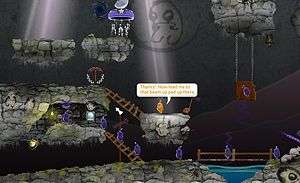 I spent hours toying around with the community’s creations, amazed by the ingenuity of some, entertained by the intelligence of others and grateful to the one guy who has dedicated his time to recreating levels from that game I said I’d stop mentioning. It really is up there with LittleBigPlanet in terms of ingenuity, with one map I encountered being an oddly placed but awe-inspiring replica of Tetris. I know that, given the inclination to invest the effort, I could happily knock together something satisfying, but given the breadth and talent already on offer, I was more than satisfied in my role as Player.
I spent hours toying around with the community’s creations, amazed by the ingenuity of some, entertained by the intelligence of others and grateful to the one guy who has dedicated his time to recreating levels from that game I said I’d stop mentioning. It really is up there with LittleBigPlanet in terms of ingenuity, with one map I encountered being an oddly placed but awe-inspiring replica of Tetris. I know that, given the inclination to invest the effort, I could happily knock together something satisfying, but given the breadth and talent already on offer, I was more than satisfied in my role as Player.
Graphically, Clones is not a demanding game. I ran it on my preferred setting of 1920×1080 without hiccup, happily alt-tabbing to the community leaderboards and occasionally hitting the ‘\’ key to quickly and painlessly switch to Windowed Mode. There’s little in the way of impressive tech at work here, save for the bouncing physics behind the particles of exploded, smushed or splatted Clones which fire off bits in a satisfactory way. The entire art style is lovely with each of the six environments being rich in colour and a joy to watch; animated backgrounds and added details, such as a shark with a spring loaded nose, kept me more than entertained. The home screen for the Pilgrimage is a well rendered 3D world that lets you spin it around for your own amusement, zooming in closer to display the CloneMaster’s regions on level select. The whole game ran smooth with no technical or graphical glitches to mention and my only quibble being that when Clones are increased or decreased in size, the textures never up/down res accordingly, as such, the Big Clones aren’t always easy on the eyes because of this.
Musically, Clones is rather tedious, limited to only a handful of tracks that you honestly will get sick of. There’s no Scotland the Brave, Galop from Orpheus in the Underworld or Ronda alla Turca, just some synthesised music that you’ll have no desire to listen to on your thirtieth attempt of any given stage. The rest of the audio is pleasing enough, never going any further than the game requires, knowing the for the most part, your attention is fixed on dealing with the problem at hand.
To control however, the game is a joy. Tomkorp have clearly invested a lot of time in deciding how best to give you the most control, especially for the guaranteed moments of panic when the game really does become hectic. Each morph ability is easily activated by its own keyboard shortcut, through a click-wheel system dubbed ‘The Belt’, or for those with fancy-pants screens, you can make full use of the game’s inbuilt touch-screen functionality. If you’re happy to kick it old school, you can of course rely on the much simpler method of left clicking on the Clone and then left clicking once more on the generously sized panels to initiate a morph. I never really once felt let down by the controls, only by myself at not being quick enough to respond to them and was always grateful when an in-level tool-tip would remind me of functions available at my fingertips.
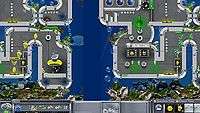 |
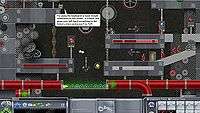 |
 |
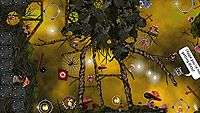 |
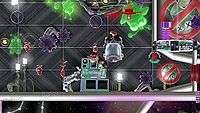 |
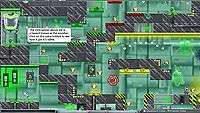 |
There are other technical features I would hope the game would make use of, however. Playing on both my high end PC and dying-a-death laptop, I felt it was a shame that Clones wasn’t taking advantage of any internal cloud services, with only the Steam version able to provide that. Seeing as Clones required a registration, login and sync with the game’s internal server, would it really have been too much extra work to track player progress externally, or perhaps I’m now just being far too picky and critical over what is otherwise, a resounding success for puzzle games everywhere.
Pros- • A true evolution of a gaming legend that does not disappoint
• Fantastic use of many different styles of puzzles
• Fantastic, addictive community implementation
• Robust Level Editor tools
• Genuinely charming art direction that you’ll fall in love with
- • No inbuilt browser to better track scores
• The un-mentioned multiplayer modes are a ghost town
• Music is a letdown considering the successes made in every other area
I was not expecting the pure packaged joy that Clones would deliver. This is Tomkorp's first entry into the industry, having previously operated as a software engineer pioneering Canada’s foremost modular dealership management software, and to think that they have managed to knock so many nails on the head with Clones, I’m almost tempted to fly to Canada and buy a car to see how good it is. Clones is fun, fast and frustratingly addictive. It’s such a complete package that it really is hard find fault, until of course you remember that not everyone likes puzzle games.
While Clones is without any doubt the head of its class, it’s a small class with twenty year old competition. The game is definitely welcoming to anyone wanting to give it a go, but the challenge ramps up in no time and those not strapped in could easily get left behind.
Coming in at around £12 retail, Clones is still fantastic value for money. The community features are top notch and give the game strong, long legs which will keep it going for quite some time. Anyone still on the fence should navigate over to the Clones website and download the demo and everyone else should go and sit in the dark and experience a life without it. Just stay away from my world rankings, I mean it.
Last five articles by Adam
- Party Pooper
- Battlefield 3 - Review
- Red Orchestra 2: Heroes of Stalingrad - Review
- Burnout CRASH! - Review
- Dead Island - Review















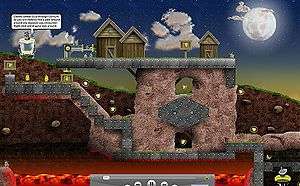
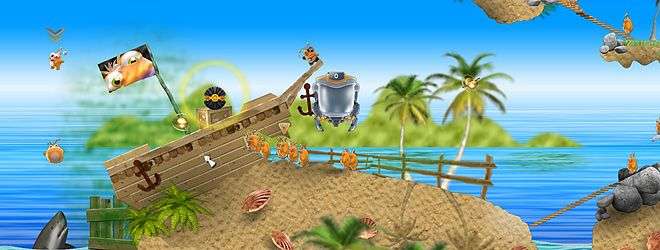
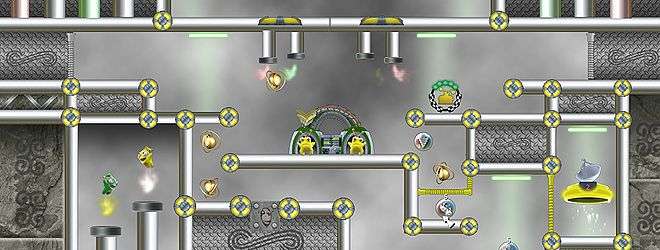
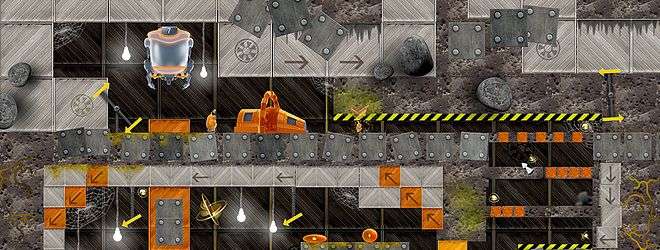
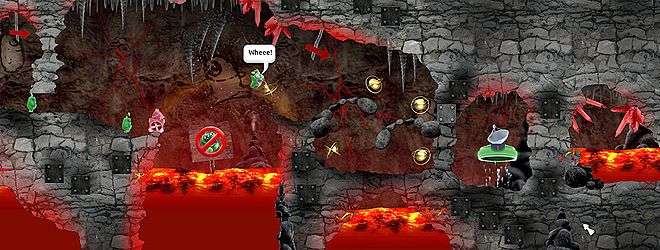





That’s the best opening line to a review ever.
I agree with Rich. I almost skipped to the comments and went “I’m sold!”
Reading more, it sounds like a fantastic game, and this review stands as one of your best, good sir Adam
Spiffing job!
The game looks gorgeous to be honest, and I’m another one who adored the first two Lemmings games (although I don’t think that I ever completed them), so this one looks like a purchase for me. Great review
Sold on the opening line.
Good job mate.
Thanks for the kindness
I can’t recommend this one enough, very creative little puzzler
Thanks again all
Thanks for the VERY comprehensive review! It was both entertaining and thoroughly informative. There is a small community of online players, but not many people progress to the skill level required for competitive matches, although playing 2 vs 2 can help because you can blame your teammate Watch for “Multiplayer Jams” in the game forums if you are interested.
Watch for “Multiplayer Jams” in the game forums if you are interested.
Thank you Ryan! Always flattering to see the developers extend such a gesture to read our reviews and take the time to comment.